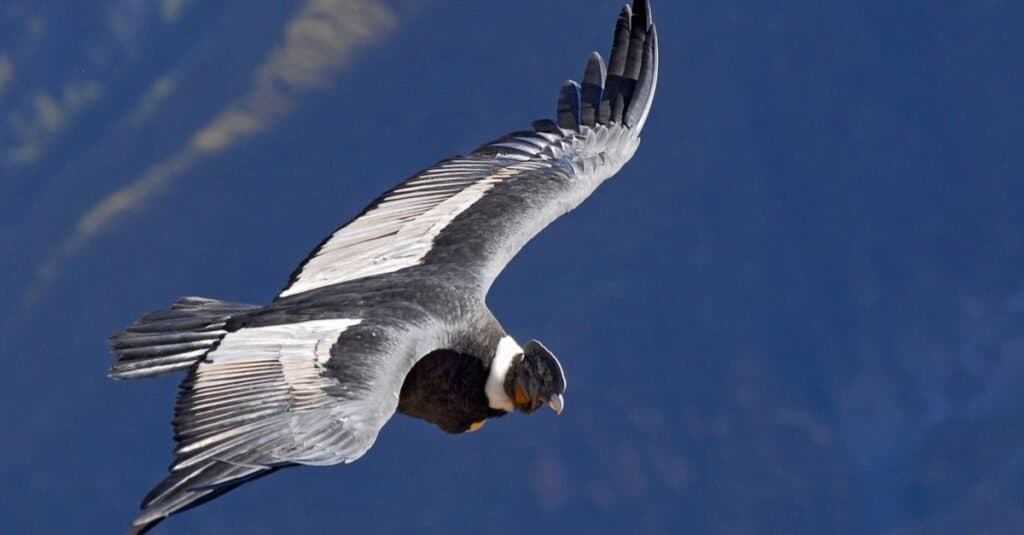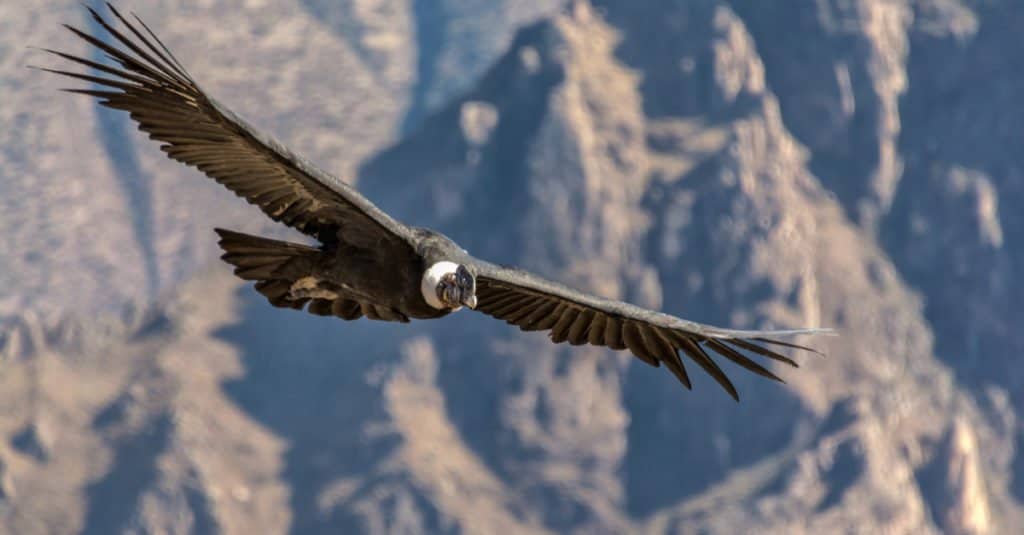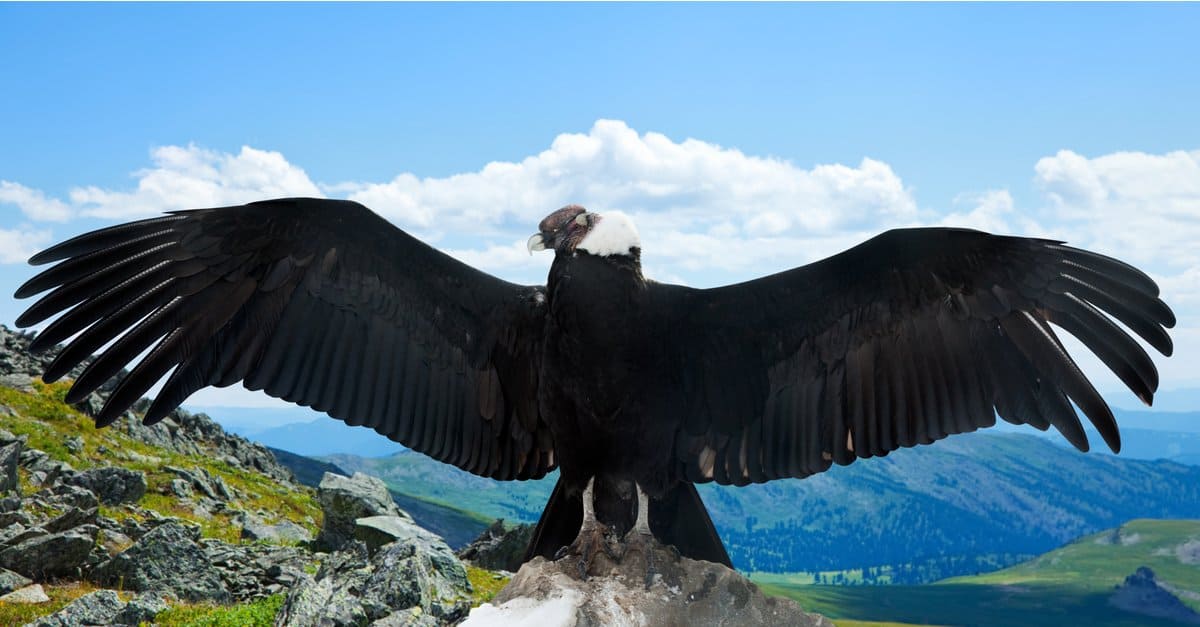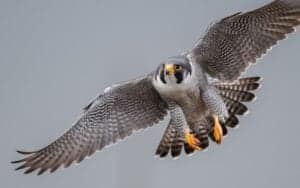Condors are easily some of the most interesting birds in North America. There are two species of condor, both of which are classified under the New World vulture family. Condors often end up on “largest wingspan lists,” and for good reason! They aren’t just vultures; they are some of the largest flying birds in the world. Let’s take a look and learn: Condor Wingspan & Size: How Big Are They?
What is a condor?

Condors are two specific birds within the New World vulture group.
©Cezary Wojtkowski/Shutterstock.com
Condor, buzzard, and vulture seem to be words used interchangeably across the world. There is a bit of confusion around their usage, so let’s address that quickly so we can fully understand what a “condor” even is.
There are two distinct regions where vultures live: the Old World and the New World. Although all 23 species of vultures are all referred to as vultures, they evolved separately and are evolutionary different (hence the Old and New world distinction). Condors are simply two species of New World vultures that live in North and South America. The two species of condor are the Andean condor and the California condor. They are the only two birds in the New World vulture family referred to as “condors,” and that mostly has to do with their size and evolutionary history.
In one sentence, “condors” are just two specific species of vulture that live in North and South America.
How big are the two species of condor?

The Andean condor has a wingspan of up to 10 ft. 10 inches and the California condor has a wingspan of up to 10 ft.
©Gus Martinie/Shutterstock.com
Andean condor size
The Andean condor is the larger of the two condors by a decent margin. Female Andean condors weigh around 25 lbs, while males weigh up to 28 lbs (this difference is usually reversed in birds of prey, making it notable). The heaviest Andean condor was recorded at 33 lbs. They are the heaviest average flying animal or bird in the world (although bustards occasionally weigh more). Their wingspan can top 10 ft. 10 inches, giving them one of the largest in the entire world, only exceeded by a few pelican and albatross species. Additionally, they have the largest surface area of any bird’s wingspan in the world. When standing, they average almost 4 ft tall.
California condor size
The California condor, slightly smaller than the Andean condor, averages out at 18-20 lbs, but can grow larger, with some individuals recorded at 30 lbs. Males are slightly larger (like the Andean condor), making them another exception to the sexual dimorphism present with most raptors. The wingspan of the California condor is around 10 ft, but there have been claims (without evidence) that they can grow to 11 ft. Standing up, they are around 4 ft. 2 inches. Altogether, they are the largest wingspan of any North American bird, but a few species of swans, pelicans, and albatrosses are heavier and/or taller.
Why are condors so big?

Condors are the largest birds within the New World order of vultures.
©MTKhaled mahmud/Shutterstock.com
The Andean condor lives along the Andes mountain range (hence the name) and has access to large swaths of territory where large animals live. The potential carrion carcasses include things like llamas, alpacas, rheas, and guanacos, but most condors that live inland have adapted to feed almost entirely on cattle. On the coast, they are known to eat beached fish and sealife.
There isn’t a cut and dry answer to why condors are so much larger than the average vulture (black and turkey vultures, for example), but some evolutionary evidence can point us in the right direction. Firstly, it’s important to know that a larger bird can eat larger carcasses. In the case of the California condor, the height of the population seems to be during the last North American ice age, where megafauna roamed the land. Mega-fauna (things like mammoths and dire wolves) included anything over 100 lbs. The California condor relied on these large sources of food, and its size likely helped it niche into these larger resources. When the ice age ended, the range of the bird was reduced drastically.
With their large wingspans, condors are able to cover large distances in their search for food. The California condor is able to float on warm air thermals as high as 15,000 ft, soaring for hours over large swaths of territory. Using their enhanced eyesight, they can spot a carcass from quite a ways away. There are some reports that the Andean condor is able to fly 100miles without flapping its wings, conserving energy as they float on thermals across mountain ranges.
The Andean condor: information and facts
As mentioned above, the Andean condor’s wingspan can top 10 ft. 10 inches, one of the largest in the world.
The Andean condor is one of the largest flying birds in the world. They live across the entire range of the Andean mountain range in western South America, although their numbers are in decline. Their diets include large animals along the Andean mountains, but inland groups have switched to primarily feeding on cattle and dead farm animals. Coastal populations live off of beached sea life and the associated carcasses. They are carrion eaters and spend their days searching for dead animals. In the wild, they can live up to 50 years, with some reports of captive individuals living to 60.
The California condor: information and facts
California condors’ wingspan is around 10 ft, with claims that they can grow to 11 ft.
The California condor is the largest flying bird in North America and currently has a small range, only living in parts of Utah, Arizona, California, and Mexico. They were considered extinct in the wild until conservation groups were able to re-release them into a few small regions. Now, their population seems to be growing, but the bird as a whole is still incredibly rare. Their diets include medium to large mammals, but they will feed on almost anything dead. They are carrion feeders, preferring meat that has been dead for 2-3 days, making it easier to tear.
Thank you for reading! Have some feedback for us? Contact the AZ Animals editorial team.








